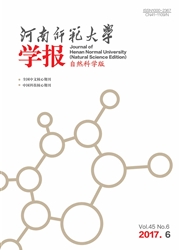

 中文摘要:
中文摘要:
目的:研究肺癌脑转移瘤在磁敏感加权图像(SWI)上的影像特点,比较其与常规MRI在脑转移瘤显示方面的不同,探讨SWI对脑转移瘤的诊断价值。方法:回顾性分析经临床证实的肺癌脑转移患者24例,其中单发8例,多发16例。所有病例均行MR常规平扫(T1WI、T2WI、T2flair)、增强扫描及SWI扫描。结果:MR常规平扫检出146个病灶,T1WI增强扫描检出221个病灶,SWI扫描检出222个病灶,其中常规序列检出出血的瘤灶35个,SWI检出出血瘤灶113个。Friedman秩和检验显示在脑转移灶检出数目方面,常规MR平扫明显少于T1WI增强扫描和SWI序列(P〈0.05),但T1WI增强扫描与SWI序列之间无统计学差异(P〉0.05);在出血性瘤灶数目检出方面,SWI明显优于常规序列(P〈0.05)。结论:SWI对于脑转移瘤的显示具有较高的敏感性,并在肺癌脑转移瘤内部出血显示具有一定优势。与常规MR相比,SWI能够在肺癌脑转移瘤的诊断中提供更多影像学信息。
 英文摘要:
英文摘要:
Purpose: To study the features of brain metastases from lung cancer on susceptibility weighted imaging(SWI),and to evaluate the diagnostic value of susceptibility weighted imaging in detection of brain metastases. Methods: Twenty-four cases of brain metastasis from lung cancer were analyzed retrospectively. There were 8 cases with single lesion and 16 cases with multiple lesions. Conventional MR imaging(including pre- and post-contrasted T1 weighted imaging(T1WI),T2 weighted imaging(T2WI) and T2 fast fluid attenuated inversion recovery)(FLAIR)and SWI were undergone in all cases. Results: More lesions were detected on post-contrasted T1WI(n=221) and SWI(n=222) than those on the pre-contrast MRI(n=146). The difference was with statistical significance between post-contrasted T1 WI and pre-contrast MRI(P〈0.05),and between SWI and pre-contrast MRI(P〈0.05); there was no statistical significance between post-contrasted T1 WI and SWI in lesion detection(P〈0.05); the number of tumors with hemorrhage detected on SWI(n=113) was significantly more than those on conventional MRI(n=35)(P〈0.05). Conclusion: SWI is with high sensitivity to detect the brain metastasis,and it has certain advantages in detecting intratumoral small vessels and micro-hemorrhage in brain metastasis from lung cancer. SWI can provide more imaging information than conventional MRI in the diagnosis of brain metastases from lung cancer.
 同期刊论文项目
同期刊论文项目
 同项目期刊论文
同项目期刊论文
 Spectroscopic and molecular properties of X1Σ+, a3Σ+, b3Π, d3Δ, C1Σ-, e3Σ-, D1Δ and A1Π electronic s
Spectroscopic and molecular properties of X1Σ+, a3Σ+, b3Π, d3Δ, C1Σ-, e3Σ-, D1Δ and A1Π electronic s MRCI study on the spectroscopic parameters and molecular constants of the X1Σ+, a3Σ+, A1Π and C1Σ- e
MRCI study on the spectroscopic parameters and molecular constants of the X1Σ+, a3Σ+, A1Π and C1Σ- e Spectroscopic investigations on HBr+(X2Π) ion using CCSD(T) theory in combination with cc- pV5Z basi
Spectroscopic investigations on HBr+(X2Π) ion using CCSD(T) theory in combination with cc- pV5Z basi MRCI study on potential energy curves, spectro- scopic parameters and ro-vibrational energy levels o
MRCI study on potential energy curves, spectro- scopic parameters and ro-vibrational energy levels o MRCI study on spectroscopic and molecular properties of B1Δg, B’1Σg+, C1Πg, D1Σu+, E1Σg+ and 11Δu el
MRCI study on spectroscopic and molecular properties of B1Δg, B’1Σg+, C1Πg, D1Σu+, E1Σg+ and 11Δu el MRCI study of spectroscopic and molecular properties of X2Πg, a4Πu, A2Πu, b4Σg-, D2Δg and B2Σg elect
MRCI study of spectroscopic and molecular properties of X2Πg, a4Πu, A2Πu, b4Σg-, D2Δg and B2Σg elect MRCI study on spectroscopic and molecular properties of several low-lying electronic states of the C
MRCI study on spectroscopic and molecular properties of several low-lying electronic states of the C Effects on spectroscopic parameters of several low- lying electronic states of GeS by core-valence c
Effects on spectroscopic parameters of several low- lying electronic states of GeS by core-valence c 期刊信息
期刊信息
